Experience the History of Fort Pickens
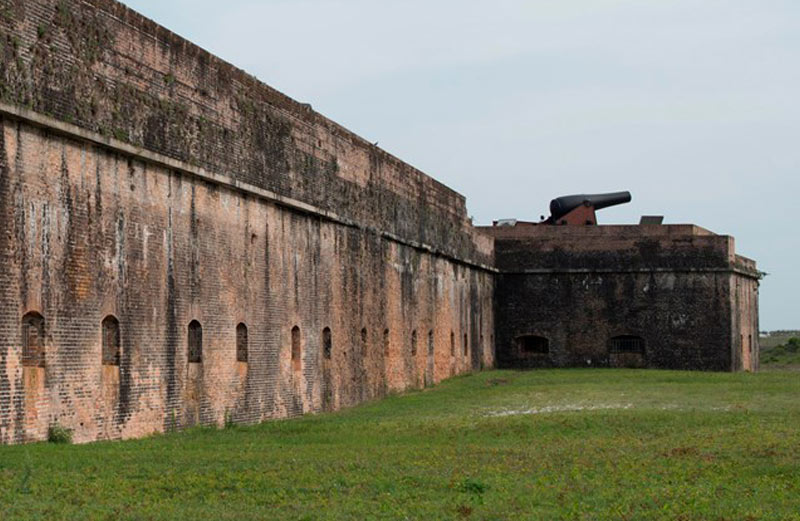
By Katie King
The truth is, as the site of our nation’s first settlement — with more than 450 years of history to lean on — naturally, Pensacola offers endless historic grounds to explore and stories to experience.
We are lucky to have our own monuments to days gone past – actual structures that have witnessed the progress of history and changes in American culture.
Pensacola’s importance as a military town stretches back much further than today’s Navy bases. Right here in Pensacola, we have the remnants of four forts that date back to the Revolutionary War.
The largest – and arguably most famous – fort in Pensacola is Fort Pickens: an expansive brick fortress of arched tunnels and a complex of buildings on the western tip of Pensacola Beach.
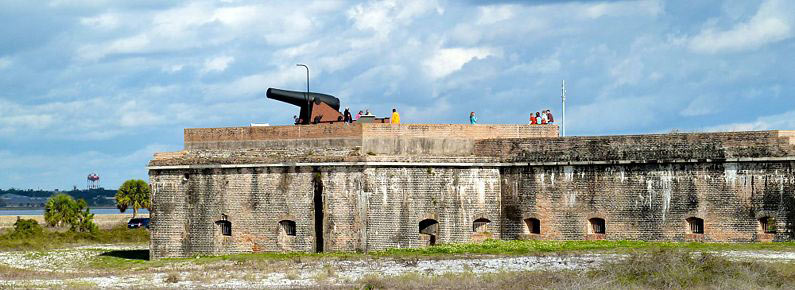
After the War of 1812, the United States began constructing coastal forts to protect important waterways and seaports. Pensacola Bay was one such area.
European powers had long considered Pensacola Bay one of the most important on the northern Gulf Coast. With depths ranging between 20–65 feet and a length of about 13 miles, Pensacola Bay afforded the deepest anchorage on the Gulf Coast and a large protected harbor for ships.
In 1825, President James Monroe signed a law establishing the Pensacola Navy Yard and Depot on Pensacola Bay.
From its location on the western end of Santa Rosa Island, Fort Pickens would command the approaches to the channel, control access into and out of Pensacola Bay, supplement Fort McRee and Fort Barrancas, and prevent an enemy force from using the island to launch attacks against the Pensacola Navy Yard.
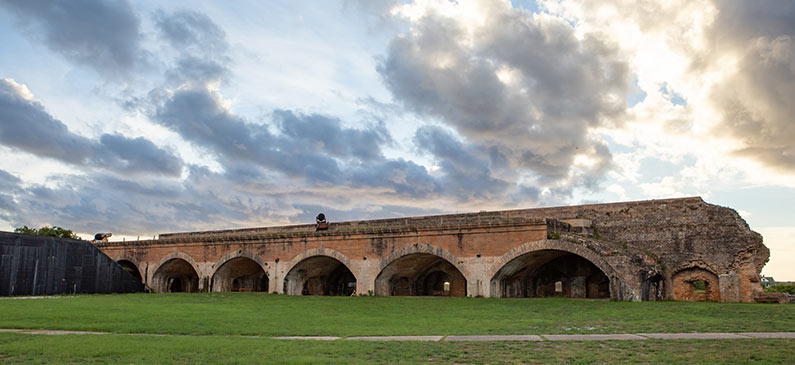
Fort Pickens had to be massive to look threatening. The design and construction began in 1829, using a combination of skilled tradesmen, general laborers and slave labor. It called for a pentagonal shape with four of the five walls facing water and one facing land. The fort’s walls rose about 40 feet high.
In October 1834, after more than five years of construction using more than 21.5 million bricks, Fort Pickens was completed and named after Revolutionary War hero Brigadier General Andrew Pickens.
At the time of its completion, Fort Pickens was the largest brick structure on the Gulf of Mexico. It exhibited the latest theories in coastal defense design, construction, and weaponry.
Designed to unleash a ring of fire from its five walls, as many as 200 cannons could be installed along it. During times of peace, a garrison of 60 soldiers could occupy Fort Pickens, increasing to 500 during times of war and up to 1,000 soldiers during a siege.
One of its most storied battles took place on October 9, 1861, when a force of more than a thousand Confederate men crossed Pensacola Bay under the cloak of darkness to stage a surprise attack to capture the Union-held fort. The Battle of Santa Rosa Island ensued, and after a night of heavy artillery and gunfire, the Confederates withdrew and retreated back to the mainland. 175 soldiers perished in the battle.
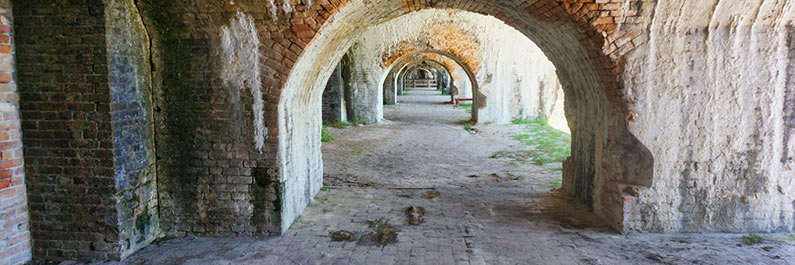
Despite repeated Confederate threats, Fort Pickens remained one of only four Southern forts to stay in Union hands throughout the American Civil War.
Toward the end of the 19th century, Fort Pickens’ most famous occupant was Geronimo. The Apache war chief was one of a handful of native warriors imprisoned by the American military following conflicts in the west. From October 1886 to May 1887, Geronimo’s Fort Pickens internment was hailed as a tourism boost by local officials. Tens of thousands of people paraded through the walls of Fort Pickens to see the legend in person. Click here to learn more about Geronimo’s Fort Pickens internment.
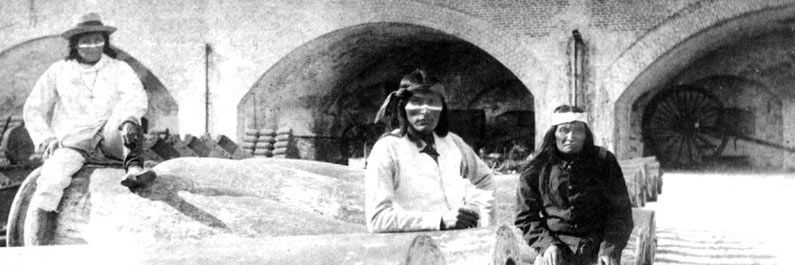
During the late 1890s and early 20th century, new warfare technology – such as rifled artillery and armored warships – called for more elaborate defenses. Over the next half century, the US Army constructed several large, concrete gun batteries all around the fort as well as battery stations, radar stations, range finders, magazines, a seawall, power houses and administration buildings.
The fort remained in use until 1947.
Today, Fort Pickens still stands tall as an enduring symbol of the United States. The fort is now part of Gulf Islands National Seashore, and as such, is administered by the National Park Service. Thanks to the park service’s meticulous preservation, nearly 200 years later, visitors to the fort can still explore its beautiful, reversed-arch brick and mortar tunnels, which have withstood so much history, to not only admire its craftsmanship but also appreciate its antiquity.

